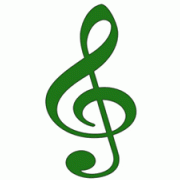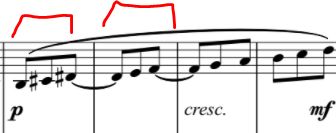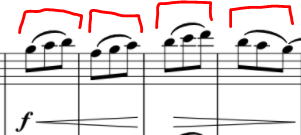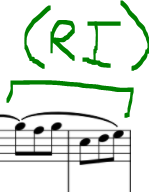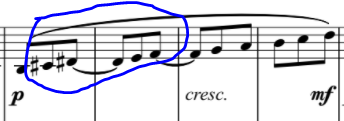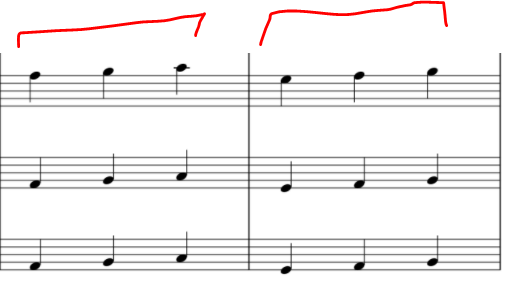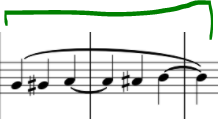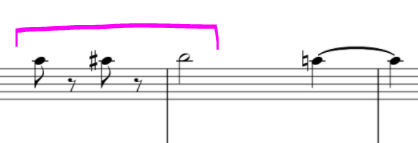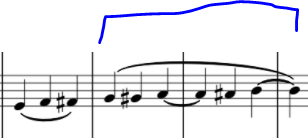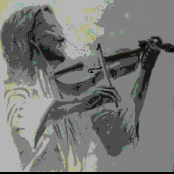Leaderboard
Popular Content
Showing content with the highest reputation on 10/09/2020 in all areas
-
Good evening everyone! I'm excited to present a new piece I have been working on for the last month or so: Scherzo for Orchestra. I deliberately wrote this fairly quickly, with the intent to write something fun, conventional, and maybe even a little whimsical. I'm interested in any and all constructive feedback. I had a few goals in mind as I composed this, feel free to critique my success or failure on these: Write something a little more informal and accessible, with catchy, memorable themes. Start with a very simple idea, and build the entire piece off of it. The four bar opening phrase in the 2nd violins popped into my head one day, so I tried to build the entire piece off of this motive and transformations of this motive. Practice having multiple contrapuntal lines. Some details on this are below. Write something that would work as a middle movement of a larger work, such as a symphony. Write something under 10 minutes, since I might decide to enter it into a competition and a lot of competitions have a 10 minute time limit. The piece is loosely structured in a three-part rondo form (ABACABA). (0:00 - 1:32) - A Theme - A very quick staccato theme in C# minor. I based this on the idea of a fugue, with each voice entering at different scale degrees, before they all come together to cadence. I'm sure I broke a few rules on the counterpoint, but it got the job done. The section ends on the V (G# minor) (1:32 - 2:21) - B Theme - A soaring theme in E major, then restated in Db major. Here I tried to have descending chromatic lines to complement the ascending melody. (2:21 - 3:04) - A Theme - Restatement of the second half of the A Theme, this time ending on I (C# minor) (3:04 - 6:31) - C Theme - A waltz in D major that begins very timid, gradually gains confidence, and goes out with a bang. (6:31 - 8:01) - A Theme - Restatement of the A Theme, this time in D minor, with the orchestration modified slightly. I threw in a couple unprepared modulations up a half step, to Eb minor and E minor. As a result I may have broken a "rule" here since I ended the section on B minor (which is not the V of D minor, the key I eventually return to). (8:01 - 8:49) - B Theme - Restatement of the B Theme, this time in Db major and Bb major. (8:49 - 9:37) - A Theme - The second half of the A Theme again, eventually returning to D minor to end the piece. As usual, I have an onslaught of questions I would like specific feedback on. Feel free to answer as many or as few as you wish: What effect does the music have on you? Does in conjure up an image? Or an emotional feeling? Does it tell you a story? This can be the piece as a whole, or a specific part or parts. What was your favorite part? What was your least favorite part? Do you have any comments or critiques on technique, e.g. harmony, melody writing, counterpoint, orchestration, voice-leading, etc.? How do you feel about the overall form? Is it effective? Do any of the parts seem impractical to you? It's a pretty fast piece with a lot of technique, so I'm curious if some of the parts are impractical. I don't mind them being difficult, I would only be concerned if they are borderline impossible. Do you have any comments of the quality of the performance in the audio file? I really want this to be a decent representation of how the piece would sound if it were performed live, since it is unlikely it ever will be. Feel free to put your "conductor hat" on and critique the "orchestra". I have included a score and welcome any constructive feedback on its presentation. And if you're like me it's a lot more fun to follow along with the score. Are there any composers this reminds you of, that I might enjoy listening to? Sound libraries: Spitfire Symphonic Orchestra and Spitfire Percussion VSL Trumpet (only for some of the lyrical trumpet melodies) VSL Violins (only to layer with the violins in Spitfire) Thanks for listening, I hope you enjoy! If you liked something I did and want me to explain how I did it, feel free to ask as well. -gmm4 points
-
1 point
-
@gmm I do see now how the themes are connected ... I was just trying to wrap my head around where you got that figure in m. 283 from (where the strings glissando up a 6th). I also hear how you bring the A theme back into the end of the waltz. Great job!1 point
-
Yeah I'm not crazy about the ending either. My (poor) excuse is that if it were included as a middle movement of a symphony, it wouldn't be the end of the piece, so I could worry about a more satisfying ending in the finale. I made a couple of attempts to write a coda, but couldn't come up with anything I was happy with, so I left it as is. It's a bit of a stretch, I'll admit, and I'm certainly not at Beethoven's level by any means. It's not so much that I went directly from the A theme to the waltz, but that I went from A theme, to B theme, to waltz theme. I'll try to demonstrate: I took the three-note ascending motive from the second violins in m.5 to build the B theme: Instead of having the two three-note groups offset by one scale degree, I moved the second group up one scale degree, and tied the repeating notes together. Here's the first Violin in m.143, pg.12: I continue to use these three-note units to build this entire section. Here's the first violin, m.151, pg.12: I used the below motive from the second violins in m.3 to build the violin melody in .m.155, in retrograde inversion (and shifting the scale degrees around a bit) Now to get to the waltz theme, I took the violin melody in m.143 and offset it by a beat, so the second note landed on the downbeat. This gave me the "shape" of the melody, which I altered the notes to be chromatically ascending instead of by scale degree, m.280-282, pg.21: Like I said, maybe a bit of a stretch, but it helped me avoid coming up with completely new material at each new section, and resulted in melodies that I was happy with. To make the connection a little more concrete, I tried to hide a few of the motives from the ABA section within the C section: Trombones/tuba m.400-403 is the B theme from the violins at m.151: Violins, m.408: Violas, m.305: The chromatically ascending horn at m.139 is used for the flute, clarinet, and violin at m.346: It's ABCABC, A (m.269-313), B (m.313-345), C (m.345-359), A(m.359-379), B (m.379-396) C (m.396-422). I tried to alternate the "moods" between each time the A and B themes were heard. A is first timid, then confident, B is first confident, then timid. C is first light and floaty, then heavy and bombastic (and I needed an excuse to use the trombone gliss lol). Thank you very much for your thorough listen and insightful comments, as always! If the pandemic ever ends and I encounter you IRL, drinks are on me 🙂. I'm not 100% sure, but I think a symphony might be my next big project, but it will of course take quite some time...1 point
-
great. reminiscent of escape-exploration movie themes to me. (I felt this escape theme more intensely in your previous piece.don't know what kind of theme you want to feel, but that's what I felt.) I didn't correlate this theme with the middle part, but the contrast is good. Do you write this in daw and then export it to the notation software? I've never used a daw. which is easier to work with? Does writing in daw or notation software affect your creativity differently? thanks for sharing1 point
-
Thanks dude! I just used the entry level version of Cubase to make the audio file, then exported the MIDI into Sibelius to make the score.1 point
-
1 point
-
Overall an enjoyable classically-leaning piece certainly befitting of the title of Scherzo! To start off, I felt like you forced yourself to cut the piece off before the 10 minute mark and it sounded unfinished to me like it needed a longer coda/denoument. I just listened to the end again and it does seem like it has a short coda but the last two chords still don't sound finished to me - they imply another continuation like took place earlier in the piece when the first compound ternary (ABA) section came to a close before the Waltz. Now that I listen to that part again I understand why the end sounds unfinished - it concludes in exactly the same manner as the first compound ternary. Some kind of alternate coda would seem more appropriate, possibly incorporating the material from the waltz as well. I do have to say that your themes are very conducive to contrapuntal treatment as this piece flaunts that property quite effectively. At the same time they're very scherzo-like and the themes in the waltz are very waltz-like. You seem to enjoy creating rhythmic illusions or hemiolas since your themes both play around with emphasizing the weak beats (like the A section fugal theme and the 2/4 hemiolas in the waltz). As far as building the entire piece off of one simple idea - I sympathize with the endeavor but I don't really see how the theme from the A section is related to say, the waltz theme (although you can correct me if I am missing something). Also, the type of theme that you chose to build on doesn't really have the kind of simplicity and lucidity (in my opinion) that would be necessary to make a really audible connection/union between all the material in the piece and achieve the kind of accessibility that you were going for (or that Beethoven was going for in his 5th Symphony when he attempted the same). The A theme sounds kind of like an incomplete fugue subject. It's still fun of course but I'm just trying to give you some (imo) constructive feedback. I think you succeeded on both those fronts. I feel like this piece is really a very exclusively classically informed piece and as such I don't feel like it really so much as tells a story but more presents the listener with a clear form/structure. It certainly isn't in the vain of your usually cinematically-inspired orchestral works. I like the frantic clarinet noodling that you have couched into the A sections throughout the piece (0:57 and whenever that comes up). I don't have a least favorite part. I also like how you pass solos between the trumpet and horn in the A sections. Besides the above remarks about the need for a longer coda, I thought the form was quite effective. You don't talk much about the form of the waltz. I am guessing that you'll probably tell me it's just through-composed with the last section meant to bring the waltz to a frantic close while returning the piece to it's original tempo - clever! In a piece as contrapuntal as this I am glad to say that it does not remind me of Bach - you have definitely put a personal and original spin on this genre. Overall quite an enjoyable Scherzo! I see a future where you submit whole symphonies with multiple movements at a time with upwards of an hour of listening for our lucky ears. Thanks for the music!1 point
-
Adding another unfinished piece. I like where it's going but even this small segment needs to be ironed out.1 point
-
I love the section with the flute staccatos. Love the dynamism. The way you layer everything is absolutely incredible.1 point
-
The 'first 20 seconds' sounds like it was written in a very Stravinsky-ish pen-diatonic standing chord type of technique where every note of a scale is used during a passage. It's a neat sound that you accomplish there. Once again I wish you had a score - it would be an achievement on top of what you already have. Always fun to listen to your music!1 point

.thumb.png.8b5b433a341551e913a34392660bc95b.png)
